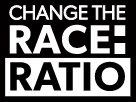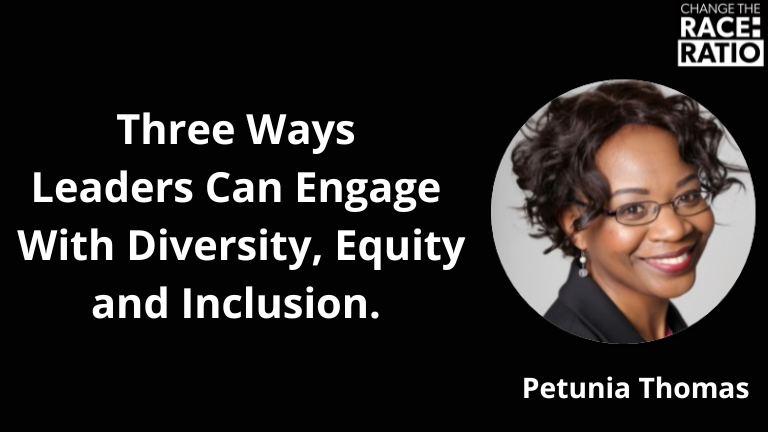We live in uncertain times. Businesses are facing challenges on multiple fronts, from climate change and global conflict to achieving net zero.
Business resilience is essential as we navigate our current global challenges. This article offers some fresh insights into three things business leaders specifically can do to contribute to economic growth and sustainable business expansion - through creative new partnerships, leadership pipeline interventions, and checking and challenging their own learning, development and connection to diversity and ethnicity.
Building diverse partnerships through supply chain and procurement
SMEs are the engine of economy with nearly 99.2% of small businesses (0-49 employees) accounting for three fifths of the employment in the UK private sector.
Innovation flourishes when there are a number of different perspectives around the table. So build this diversity into your business development plan by extending your procurement beyond the standard ‘usual suspects’ and engaging with ethnic experts, professionals and independents.
Invest time and energy in connecting with grassroots and specialist organisations, social entrepreneurs and community groups as well as building strategic partnerships.
By driving these changes, you’ll be contributing on a national scale to help counter the effects of recession, enhancing social mobility and equity as you invest in the engine of SMEs.
Practical action you can take
- Engage with and seek to partner with at least two ethnic minority owned SMEs, community groups and social entrepreneurs in at least one division/department of your business
- Update onboarding guidelines in your supply chain. Monitor these partnerships as a percentage of your total, as well as the investment spend and value impact as part of your ESG indicators.
Building an ethnically diverse leadership talent pipeline
Leaders grow leaders. And lack of racial and ethnic minority leaders at the top of your organisation can signal a lack of inclusive culture to new employees, investors and clients alike.
Studies show that younger members of the workforce have ‘swiped left’ and rejected an organisation as a potential employer on looking at the company website and realising that the leadership team is not diverse.
Research indicates that development opportunities and progression are key to the retention of Black and ethnic minority talent, so leaders should take note of the often disproportionate attrition rates for these employees.
As a leader, consider supporting reciprocal diversity mentoring programmes, and embed them consistently into your ongoing leadership and talent management processes and programmes.
Consider - are you and your senior leaders personally engaged in ongoing internal mentoring and sponsorship to intentionally build connections with ethnic minority talent to diversify the succession pipeline?
Practical action you can take
- Monitor the relative attrition rates of (and pulse survey engagement data for) Black and ethnic minority employees for the last twelve months and for the next six months
- Reflect on what this might say about the culture of your organisation and the impact this might have on your reputation.
- Invest in expert-led interventions to help you better understand ethnicity, identity and cultural heritage. This will enable you to make the most of your potentially more diverse teams to futureproof your business for longer term growth
Taking personal leadership for learning and education on equity, diversity and inclusion
Leaders set the tone for the culture of an organisation, influencing through both proactive action as well as passive `non-action`.
Unintended but tolerated exclusion can permeate the employee lifecycle and talent management processes leading to silently toxic undercurrents. Leadership commitment to diversity and ‘walking the walk’ with respect to ED&I is a key indicator for employees on the true value that you, as a leader in your organisation, place on this issue.
So reflect on your position and mindset on this topic. What support do you need? Reach for and work with experienced professionals, particularly for your senior leadership and management teams, to support and guide you as you explore and learn.
And remember, you should not be relying on ethnic minority employees within internal community/employee networks to deliver on this ethnicity education agenda, especially if this is not their hired technical specialism or not what they were originally recruited by your organisation to do.
Ethnic minority employees are recruited, like their peers, for a specific skill set, and if delivering ED&I learning for the organisation was not part of their agreed job scope then constantly being called upon to share personal and potentially negative lived experiences as a Black or ethnic minority employee is an additional emotional burden that is not levied on their peers.
Research shows that this ‘emotional tax’ can take its toll on the mental health and wellbeing of ethnic minority employees, and ultimately negatively impact on their productivity and engagement/interaction with work colleagues.
Practical action you can take
- Reflect on and refresh any previous race and ethnicity education, awareness and training for leaders. What progress do you feel you have made in your personal learning and action? Where is there scope for improvement? Where may you still experience challenges and discomfort in conversations about race and ethnicity internally and externally to your organisation?
- Take steps to continue your learning by considering a race fluency programme.
- Engage an experienced, Black or ethnic minority leadership facilitator to deliver refresher or deeper engagement sessions with your leadership and management teams in a safe, confidential and supported space
Summary
Equity, diversity and inclusion within your leadership team and workforce doesn’t only make sound economic sense, it’s also a crucial lever for business growth through the development, retention and progression of Black and ethnic minority talent.
But remember, commitment to ethnic and racial diversity is not a one off initiative; it’s about intentionally inclusive behaviour that you’ll need to practice every day.
Moving forward, let’s see a commitment to creating equitable workplaces an integral part of delivering results and innovation through the broader business strategy and ESG goals.
Getting it (back) and keeping it on the agenda through intentional involvement, proactivity, learning and follow up will reap tangible returns on this investment.
And ultimately, let’s work together for the good and growth of the economy, society, organisations and diverse individuals within it – including for you as a leader.
And there’s no time like the present – so let’s start now!
About the Author
Petunia Thomas works with senior leaders and teams to implement strategies for change at the individual, interpersonal and organisational (systemic/structural) level.
She facilitates Inclusive Leadership for Culture Change Programmes, Race Fluency Workshops for Boards, Executive Committees and managers, Black & Ethnic Minority/BAME Mentoring (Reverse & Mutual/Reciprocal), and Career Sponsorship Programmes, as well as her acclaimed Black & Ethnic Minority Leadership Talent Programme.



